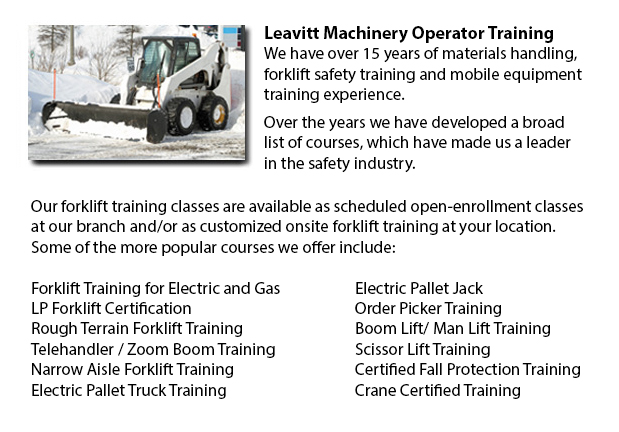
Vernon Skid Steer Ticket - On a skid-steer loader, the lift arms are at the side of the driver with pivot points at the back of the driver's shoulders. This makes them different than a conventional front loader. Due to the operator's closeness to moving booms, early skid loaders were not as safe as conventional front loaders, especially through the operator's entry and exit. Today's' modern skid-steer loaders have many features to protect the driver like for instance fully-enclosed cabs. Like several front loaders, the skid-steer model can push materials from one location to another, can load material into a truck or trailer and can carry material in its bucket.
Operation
Many times a skid-steer loader could be used on a jobsite instead of a large excavator by digging a hole from within. To start with, the skid-steer loader digs a ramp leading to the edge of the desired excavation, and next it utilizes the ramp to be able to excavate material out of the hole. As the excavation deepens, the machinery reshapes the ramp making it steeper and longer. This is a remarkably useful method for digging underneath a building where there is not sufficient overhead clearance for the boom of a big excavator. For instance, this is a common situation when digging a basement under an existing structure or house.
The skid-steer loader attachments add much flexibility to the machine. For instance, conventional buckets on the loaders can be replaced attachments powered by their hydraulics consisting of backhoes, tree spades, sweepers, mowers, snow blades, cement mixers and pallet forks. Various other popular specialized buckets and attachments consist of angle brooms, dumping hoppers, wood chipper machines, grapples, tillers, stump grinders rippers, wheel saws, snow blades, and trenchers.
History
In 1957, the very first 3-wheeled, front-end loader was invented in Rothsay, Minnesota by brothers Louis and Cyril Keller. The brothers invented the loader in order to help a farmer mechanize the process of cleaning turkey manure from his barn. This machine was light and compact and had a rear caster wheel which enabled it to turn around and maneuver within its own length, enabling it to perform the same jobs as a conventional front-end loader.
During 1958, the Melroe brothers of Melroe Manufacturing Company in Gwinner, N.D. purchased the rights to the Keller loader. They hired the Keller brothers to continue refining their loader invention. The M-200 Melroe was the outcome of this partnership. This particular model was a self-propelled loader which was launched to the market in 1958. The M-200 Melroe featured a two independent front drive wheels, a rear caster wheel, a 12.9 HP engine and a 750 lb lift capacity. By nineteen sixty, they changed the caster wheel with a back axle and introduced the very first 4 wheel skid steer loader which was known as the M-400.
The term "Bobcat" is utilized as a generic term for skid-steer loaders. The M-400 soon after became the Melroe Bobcat. The M-440 version has rated operating capacity of 1100 lbs powered by a 15.5 HP engine. The company continued the skid-steer development into the middle part of the 1960s and launched the M600 loader.
-
Vernon Heavy Equipment Training Programs
Vernon Heavy Equipment Training Programs - At whatever given construction site, there are often different types of machinery which are ready to be used. These heavy and light machines need both operators to run them and mechanics to fix them. Trainee... More -
Vernon Forklift Safety Training
Vernon Forklift Safety Training - People wanting work in industries that operate lift trucks should undergo a forklift safety training program before becoming a certified operator of a lift truck. There are a lot of ways to go about acquiring forklif... More -
Vernon Aerial Boom Lift Ticket
Vernon Aerial Boom Lift Ticket - Aerial platform lifts can accommodate various odd jobs involving high and tough reaching places. Normally used to complete regular preservation in structures with tall ceilings, prune tree branches, elevate heavy shel... More -
Vernon Manlift Safety Training
Vernon Manlift Safety Training - Manlift operators need to be cognizant and aware of all the potential dangers which are associated with particular classes of scissor lifts. They need to be able to operate the scissor lift in a way that protects not... More -
Vernon Forklift License
Vernon Forklift License - Obtaining a forklift certification or forklift license in North America will require the one training to carry out hands-on training in addition to classroom instruction. The provincial, federal and state regulatory bodies a... More -
Narrow Aisle Forklift, Order Picker, Electric Pallet Jack, Electric Pallet Truck Certification in Vernon
A pallet lift is a model of equipment dedicated in the transporting of pallets of many dimensions and weights. They can be utilized as an appendage for forklifts, cranes and other styles of heavy machinery or be applied on their own. Pallet hoists ar... More -
Vernon Boom Lift Safety Training
Vernon Boom Lift Safey Training - Boom lifts are a type of elevated work platform or aerial lifting device which are commonly utilized in construction, industry, and warehousing. Boom lifts can be utilized in practically any surroundings because of t... More -
Vernon Manlift Operator Training
Vernon Manlift Operator Training - The aerial lift or manlift is a specialized kind of hydraulic platform that is designed to lift a person vertically giving it an alternate name of a vertical personnel lift. These machinery are widely utilized for a... More

Forklift Certification Vernon
TOLL FREE: 1-888-254-6157
Vernon, British Columbia
forkliftcertificationvernon.com
Email Us
About Us


